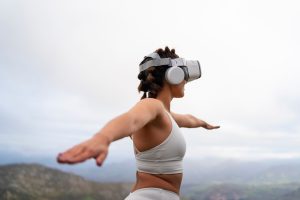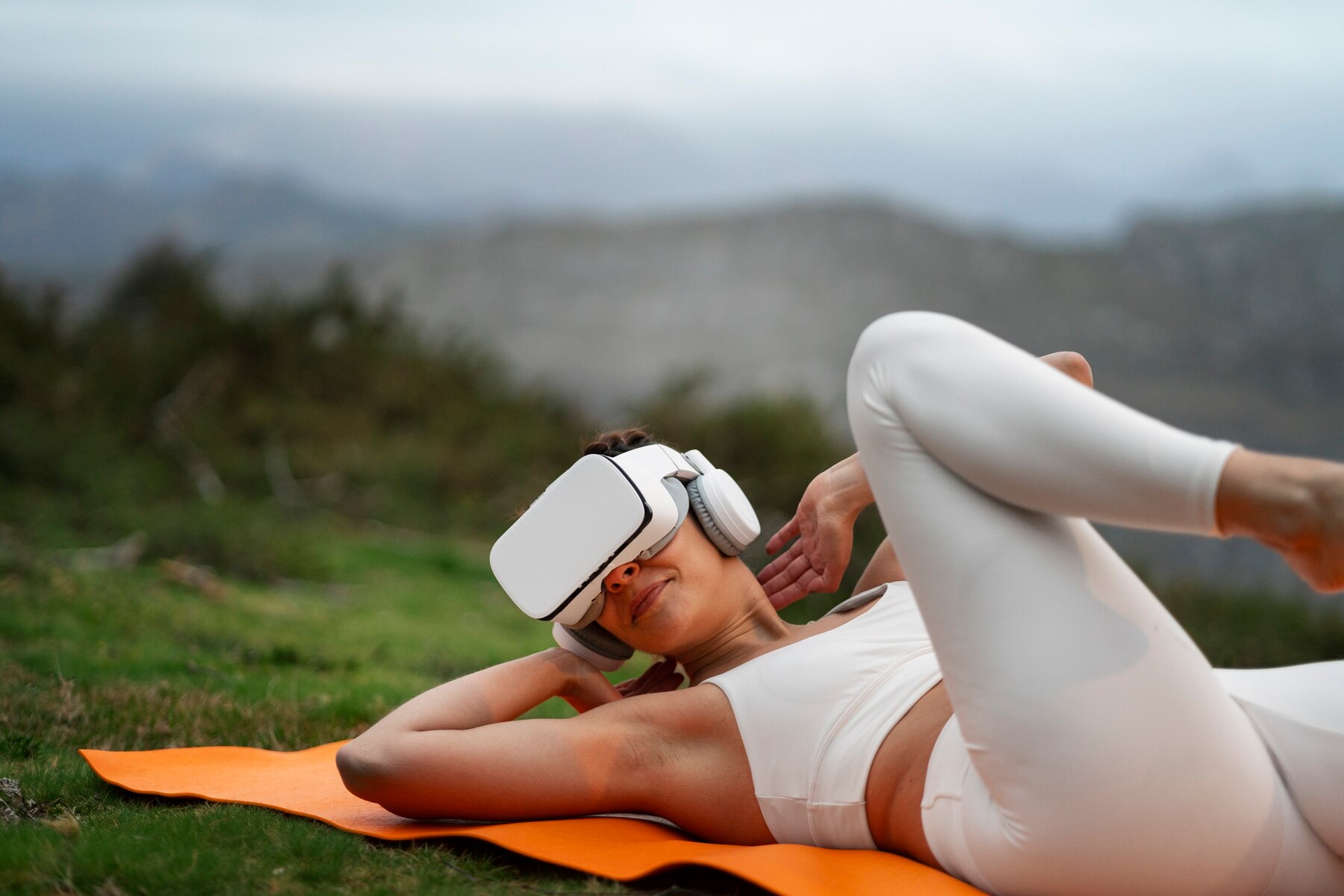In a world that’s becoming increasingly digital, technology has begun to make its way into every corner of our lives, from how we work to how we communicate and, yes, how we stay healthy. Gone are the days when fitness meant just hitting the gym or going for a run. Today, gadgets and smart devices are revolutionizing the way we approach wellness. From fitness trackers to sleep monitors and smart nutrition apps, technology promises to make it easier to lead a healthier lifestyle. But can these advancements truly make us healthier, or are we just buying into the hype?
Let’s dive into the future of fitness and wellness gadgets, exploring how they work, their potential benefits, and whether they really can improve your health.
1. The Rise of Fitness Trackers: More Than Just Counting Steps
It’s no secret that fitness trackers like Fitbit, Apple Watch, and Garmin have become household names. These devices have evolved from simple pedometers into sophisticated tools that monitor everything from heart rate to sleep quality, calories burned, and even stress levels. But how can these small gadgets truly impact our health?
Tracking Progress with Precision
Fitness trackers enable users to monitor their physical activity with incredible accuracy. The days of guessing how far you’ve walked or how many calories you’ve burned are long gone. These devices provide real-time data on your exercise routines, allowing you to track your progress and adjust your goals accordingly. They can motivate you to stay on track, especially when you’re able to visually see your improvements over time.
Moreover, modern trackers can sync with apps on your smartphone to provide more detailed analytics and suggest personalized health tips. This data-driven approach offers a higher level of accountability, helping users make informed decisions about their fitness journeys.
Motivating You to Move More
One of the biggest advantages of fitness trackers is their ability to encourage consistent movement. With reminders to get up and move, daily step goals, and achievements to unlock, these gadgets provide an element of gamification. That daily goal of 10,000 steps can become more than just a number—it can become a fun challenge that motivates you to keep moving.
2. Smart Scales: The New Measure of Health
While stepping on a scale might have once been a simple task, today’s smart scales offer much more than just your weight. Devices like the Withings Body+ or the Fitbit Aria 2 measure not only weight but also body fat percentage, muscle mass, and even water retention. These metrics provide a more complete picture of your health, allowing for a more holistic approach to fitness.
Tracking Body Composition for Better Insights
One of the greatest challenges in fitness is understanding your body’s composition. Weight alone doesn’t tell the full story—muscle mass, body fat, and water retention all play a crucial role in how healthy you are. Smart scales give you a deeper insight into your body’s condition, helping you make adjustments to your diet and exercise routine.
For instance, someone who may not see drastic changes in weight could still be losing fat and gaining muscle, which is a positive shift in their health. Smart scales offer a visual representation of these changes, allowing users to celebrate progress that might otherwise go unnoticed.
3. Wearable Health Monitors: Keeping an Eye on Your Vital Signs
We’ve seen the rise of wearable health monitors like the Oura Ring, WHOOP, and Biostrap, which go beyond fitness tracking to measure deeper physiological metrics, including heart rate variability (HRV), blood oxygen levels, and even temperature fluctuations. These devices can provide vital information about your overall health and well-being, making them useful for those who are more serious about tracking their fitness levels or even monitoring chronic health conditions.
Personalized Health Insights and Alerts
One of the most exciting advancements in wearable health monitors is their ability to alert you to potential health issues before they become serious. For example, if your resting heart rate increases or your HRV decreases dramatically, the device can notify you, suggesting that your body may be under stress or that you need more rest.
This kind of technology has the potential to change the way we approach preventive healthcare. Instead of waiting for symptoms to appear, you can take action proactively, adjusting your routine or consulting with a healthcare professional early.
Improving Sleep Quality
Sleep is a fundamental pillar of wellness, yet many people overlook its importance. Wearable devices are increasingly capable of tracking sleep patterns, providing users with a detailed breakdown of their sleep cycles—how much deep sleep, light sleep, or REM sleep they’re getting each night.
With this information, wearables can suggest ways to improve sleep quality, from adjusting your bedtime to managing stress levels. Improved sleep can have a profound impact on your overall health, boosting cognitive function, reducing stress, and even supporting immune function.
4. AI-Powered Fitness Apps: Your Personal Trainer in Your Pocket
Artificial Intelligence (AI) is transforming the fitness industry, providing personalized workout plans that adapt to your progress. Apps like Freeletics, Peloton, and MyFitnessPal leverage AI to create customized training programs based on your goals, fitness level, and progress.

AI that Adjusts to Your Needs
Unlike traditional workout programs, AI-powered apps can dynamically adjust your routine based on your performance. For example, if a workout feels too easy, the app will increase the intensity to keep challenging you. If you’re struggling, it can modify the exercises to suit your capabilities. This personalized approach can help prevent plateauing, keeping your workouts fresh and challenging.
Tracking Nutrition and Wellness Goals
AI apps are also revolutionizing nutrition tracking. With apps that scan barcodes and analyze food, they can provide real-time data on your daily intake, helping you stick to your wellness goals. Whether you’re aiming to lose weight, build muscle, or improve overall health, AI can suggest meals, monitor your macronutrients, and even recommend changes to your diet based on your fitness goals.
5. Virtual and Augmented Reality: Fitness in a Whole New Dimension
Virtual reality (VR) and augmented reality (AR) are stepping into the fitness world, creating immersive experiences that can make workouts more engaging and fun. From VR-based exercise games to AR apps that enhance outdoor workouts, these technologies offer new ways to stay fit and motivated.
Making Workouts Fun Again
Traditional workouts can feel repetitive or boring, but VR and AR bring an element of excitement and variety. VR workout games, like Beat Saber or Supernatural, immerse users in virtual worlds where they can exercise while completing fun, interactive challenges. Meanwhile, AR apps can enhance outdoor activities like running or cycling by overlaying helpful data, such as pace and heart rate, on the real world.
This technology offers a level of engagement that makes fitness feel less like a chore and more like entertainment, making it easier to stay committed to your wellness goals.
6. The Potential Downsides: Are We Over-Reliant on Technology?
As with any technological advancement, there are potential downsides. While fitness gadgets can offer valuable insights, it’s essential not to become overly dependent on them. Here are some of the concerns:
Data Overload and Anxiety
For some individuals, constantly monitoring every aspect of their health can lead to anxiety or even obsession. The pressure to meet daily step goals, track every calorie, or optimize sleep quality can be overwhelming. It’s crucial to maintain a balanced approach, remembering that wellness is about more than just numbers on a screen.
The Risk of Neglecting Mental Health
Technology focuses primarily on physical health, but mental well-being is just as important. Many fitness gadgets don’t take into account the emotional and psychological aspects of health, which are key to overall wellness. It’s important to supplement tech-based wellness efforts with activities that support mental health, such as meditation, socializing, and practicing mindfulness.
7. Conclusion: Can Technology Truly Make You Healthier?
The future of fitness and wellness is undoubtedly being shaped by technology, offering new tools and insights that can help individuals lead healthier lives. From fitness trackers that motivate you to move more to wearable devices that monitor your vitals and AI-powered apps that create personalized workouts, technology has the potential to revolutionize wellness.
However, it’s important to approach these gadgets with balance. While they can provide valuable data and motivation, they should complement—rather than replace—traditional approaches to health, such as a balanced diet, regular exercise, and mental well-being practices.
In the end, technology can be a powerful ally in your quest for better health, but it’s up to you to use it wisely and ensure it enhances your life, rather than overwhelming it. Embrace the future of fitness, but don’t forget that true wellness comes from a holistic approach that nurtures the mind, body, and spirit.
